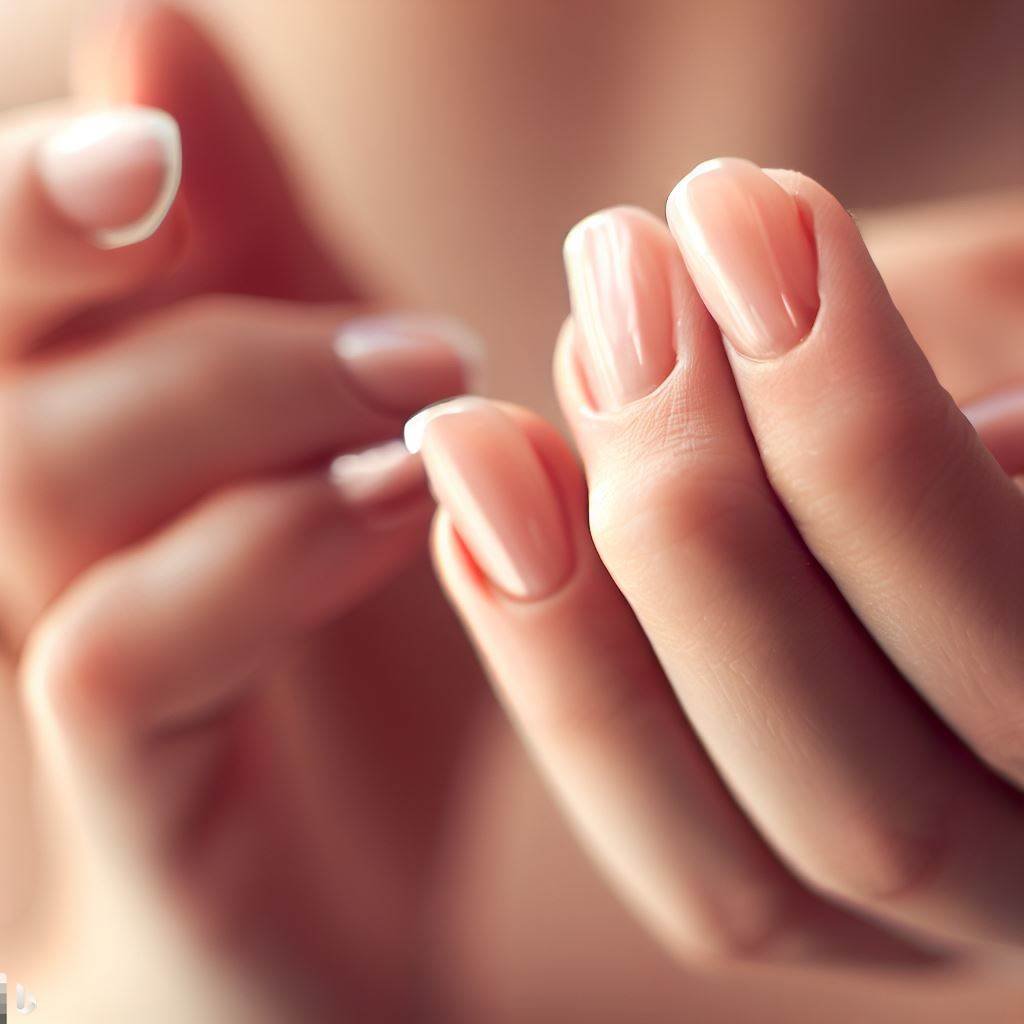The beauty industry has been a longstanding symbol of self-expression, creativity, and freedom. Nail art has become a popular trend among people of all ages, genders, and cultures. However, the quest for the perfect manicure can come with its own set of risks and hazards.
While nail glue may seem like an innocuous beauty staple, its potential effects on natural nails are often overlooked. Like a double-edged sword, nail glue can be both a savior and a destroyer. It can help attach artificial nails, repair broken nails, and strengthen weak nails. However, its improper use can lead to a myriad of problems such as nail damage, fungal infections, and chemical burns.
Understanding the potential effects of nail glue on natural nails is crucial for maintaining healthy and strong nails. In this article, we will delve into the science behind nail glue, its potential effects, and how to use it safely.
What is Nail Glue and How Does it Work?
To achieve a secure and lasting bond between artificial nails and the natural nail bed, a strong adhesive known as cyanoacrylate is commonly used. Nail glue is a type of cyanoacrylate adhesive that is specifically formulated for use in nail extensions and nail art. It is a clear, fast-drying liquid that is applied to the natural nail bed before attaching the artificial nail.
The chemical composition of nail glue includes a combination of cyanoacrylate monomers, stabilizers, and solvents. When the glue comes into contact with the air, it rapidly polymerizes to form a strong, durable bond.
Although nail glue is generally considered safe for use, prolonged exposure to the skin or inhalation of the fumes can cause irritation, allergic reactions, or respiratory problems. Therefore, it is important to use nail glue in a well-ventilated area and avoid contact with the skin.
Understanding the definition and chemical composition of nail glue is crucial in evaluating the potential effects it may have on natural nails.
Potential Effects of Nail Glue

The use of nail glue can lead to potential effects on the natural nails. Mild irritation is a common consequence of using nail glue, which can cause redness, itching, and discomfort.
Severe damage to the nail bed may also occur, which can result in pain, swelling, and even permanent nail deformities. Additionally, some individuals may experience allergic reactions to the chemicals in nail glue, which can lead to more serious health risks.
Understanding these potential effects is crucial in making informed decisions about using nail glue and maintaining the health of natural nails.
Mild Irritation
Individuals may experience mild irritation, such as discomfort or redness in the skin surrounding their fingertips, following the use of adhesive products commonly used in nail care. While this irritation is typically mild and temporary, it can still be uncomfortable and unsightly.
Fortunately, there are several soothing remedies and prevention tips that can help alleviate these symptoms. These include applying a cool compress to the affected area, using aloe vera gel to soothe the skin, avoiding excessive exposure to water, and taking breaks between manicures to allow the nails and skin to recover.
However, if irritation persists or becomes more severe, it may be a sign of more significant damage to the nail bed, which can lead to more serious complications if left untreated. Therefore, it is essential to pay close attention to any changes or symptoms and seek prompt medical attention if necessary.
Severe Damage to the Nail Bed
Severe damage to the nail bed can result from prolonged and repeated use of adhesive products, such as nail glue. This damage can lead to complications such as nail deformity, discoloration, and even permanent loss of the nail.
When the nail bed is damaged, it can take a long time for it to recover, and often, it may never fully recover. Prevention measures, such as taking breaks from using nail glue and avoiding excessive use, are important to avoid severe damage to the nail bed. Additionally, if one experiences any symptoms of nail damage, it is important to seek medical attention promptly to prevent permanent damage.
In the next section, we will explore allergic reactions that can arise from using nail glue.
Allergic Reactions
Allergic reactions to adhesive products used in nail care is a significant concern that can affect individuals using these products. Nail glue is no exception, and it can cause an allergic reaction in some people.
Symptoms of an allergic reaction to nail glue include redness, swelling, and itching around the nail area. If left untreated, it can lead to blisters, boils, and even eczema.
Treatment for an allergic reaction to nail glue involves stopping the use of the product and taking antihistamines or topical steroids to reduce the symptoms. It is crucial to prevent allergic reactions by performing a patch test before using the product and avoiding contact with the skin.
Additionally, using nail glue in a well-ventilated area and washing hands after use can reduce the risk of an allergic reaction. Understanding the potential effects of nail glue on natural nails is crucial to using it safely.
Thus, it is essential to learn how to use nail glue safely to avoid any adverse effects on natural nails.
How to Use Nail Glue Safely
The proper and safe use of adhesive for nail application can be achieved by following guidelines that emphasize the importance of safe application and potential risks. Safe application includes ensuring that the surface is clean and dry before applying the adhesive, avoiding contact with skin, and allowing ample time for drying. Potential risks include allergic reactions, skin irritation, and damage to the natural nail.
When using nail glue, it is important to remember to use it sparingly and to avoid applying it too close to the cuticle. Additionally, proper removal of artificial nails is also important to prevent damage to the natural nail. By following these guidelines, individuals can safely and effectively use nail glue to achieve beautiful and long-lasting artificial nails.
With that being said, there are also tips for applying artificial nails with nail glue that can further enhance the safety and effectiveness of the application.
Tips for Applying Artificial Nails with Nail Glue
To achieve a flawless application of artificial nails with nail glue, it is essential to prepare your natural nails beforehand. This involves cleaning and buffing the surface of your nails to ensure they are free of oil and debris.
Additionally, applying a thin layer of glue to the natural nail and pressing the artificial nail firmly in place will help to prevent air bubbles and ensure a secure hold.
By following these simple yet effective tips, you can achieve a salon-quality finish with your artificial nails.
Prepare Your Natural Nails
Prior to applying any cosmetic product, it is essential to properly prepare the surface to ensure optimal adhesion and longevity. In the case of artificial nails, natural nail health should be taken into consideration.
Natural nail health can be maintained by implementing nail preparation techniques such as cleaning the nails with soap and water, filing the nails to the desired shape, and buffing the nail beds to remove any oils or debris that could interfere with the glue’s adhesion.
Additionally, it is important not to soak the nails in water prior to applying the glue as this can cause the nail bed to expand and contract, leading to a weaker bond between the natural nail and the artificial nail.
By following these preparation techniques, the natural nail’s health can be maintained, and the artificial nails can be securely attached. To apply a thin layer of glue, gently squeeze the tube and apply a small amount of glue to the center of the nail bed, spreading it evenly towards the edges.
Apply a Thin Layer of Glue
Achieving a secure and long-lasting bond between artificial and natural nails can be facilitated by applying a smooth and even layer of adhesive. Proper technique is essential to ensure that the glue is evenly spread and not excessively applied.
The first step is to gently dispense a small amount of glue onto the center of the nail bed and spread it outwards towards the edges. It is important to avoid applying too much glue, as this can cause the artificial nails to lift or become misaligned.
Additionally, there are alternatives to glue that can be used, such as nail wraps or press-on nails, which do not require any adhesive. By using the proper technique and being aware of alternative options, individuals can achieve a secure and long-lasting bond without causing any potential harm to their natural nails.
Moving on to the subsequent section about ‘press artificial nails firmly,’ it is important to note that this step should be done carefully and with precision to avoid any damage to the natural nails.
Press Artificial Nails Firmly
Ensuring a secure and precise application of artificial nails requires firm pressure to be applied, which should be executed with caution to minimize any potential damage to the nail bed. Firmly pressing artificial nails onto the natural nail surface allows the nail glue to adhere properly, creating a strong bond that ensures the longevity of the artificial nails.
However, there are specific nail glue application techniques that must be followed to avoid any adverse effects on the natural nails. Firstly, the artificial nails should be aligned precisely with the natural nails before being pressed down firmly. Secondly, pressure should be applied evenly across the artificial nail, starting from the center and moving towards the edges, to prevent any air bubbles from forming underneath the surface. Lastly, it is important to avoid excessive pressure, which can cause discomfort or even pain to the nail bed.
By following these techniques, individuals can ensure a proper application of artificial nails with minimal damage to their natural nails. As important as it is to ensure a secure application, it is equally important to learn how to remove nail glue safely without causing any harm to the natural nails.
How to Remove Nail Glue Safely
The safe removal of adhesive substances from the nails requires a careful and patient approach, which can be achieved through the use of specific products and techniques. One of the most commonly used adhesives for artificial nails is nail glue, which can be challenging to remove without causing damage to the natural nails.
To safely remove nail glue, it is essential to first soften it by soaking the nails in warm water for a few minutes. Afterward, gently buff the surface of the glue with a nail buffer to break it down further. Once the glue has softened, it can be peeled off slowly and carefully using a cuticle pusher or a wooden stick. It is crucial to avoid using force or pulling the glue off, as this can pull off the top layer of the natural nail.
Alternatively, there are specific products available in the market that can help in the safe removal of nail glue. These products work by dissolving the glue, making it easier to remove. It is important to follow the instructions on the product carefully and not leave it on for too long, as it can cause damage to the nails.
In conclusion, safe removal of nail glue requires patience and careful attention to detail. However, there are alternative methods available to make the process easier and less damaging to the natural nails. To avoid the hassle of removing nail glue altogether, one can opt for alternative nail adhesives that are less harsh on the nails.
Alternative Nail Adhesives
This section explores alternative adhesives for artificial nails that can offer a gentler solution for those seeking to avoid potential damage to their nails during removal.
One option is to use nail adhesives that are water-soluble, such as PVA glue or Elmer’s glue. These types of adhesives can be easily removed by soaking the nails in warm water, making them a safer option for those with weaker or more brittle nails.
Another alternative is to use adhesive tabs, which are pre-cut and can be easily applied and removed without the need for any additional products or tools. While adhesive tabs may not provide the same level of durability and longevity as traditional nail glue, they are a convenient and hassle-free option for those who want to avoid any potential damage to their natural nails.
However, it’s important to note that these alternative adhesives also have their own set of pros and cons, and it’s essential to do a comparison chart to determine which option is best for your individual needs.
Overall, exploring alternative nail adhesives can be an effective way to safeguard your natural nails from any potential damage caused by traditional nail glue.
In the next section, we’ll delve into the conclusion and final thoughts on how to protect your nails while still enjoying the benefits of artificial nails.
Conclusion and Final Thoughts
By exploring alternative adhesives for artificial nails, individuals can mitigate the risks associated with traditional nail glue and protect the health of their nails without compromising on aesthetics.
While nail glue may seem like a quick and easy solution for attaching artificial nails, it can potentially cause damage to natural nails if not applied correctly.
However, by taking preventive measures and using alternative adhesives such as adhesive tabs or resin, individuals can avoid the long term effects of traditional nail glue, such as weakening and thinning of natural nails, skin irritation, and even infection.
It is important to prioritize the health of your nails while also expressing your personal style, and choosing a safer nail adhesive is one way to achieve both.
Conclusion
In conclusion, the use of nail glue on natural nails can have potential effects, such as weakening the nail bed, causing nail breakage, and leading to infections. However, with proper usage and precautions, such as using a reputable brand, avoiding overuse, and keeping the glue away from the skin, these effects can be minimized. It is important to follow the instructions provided by the manufacturer and seek medical attention if any adverse effects occur.
It is also important to consider alternative nail adhesives, such as adhesive tabs or gel nail polish, which can provide a safer and more convenient option for those looking to enhance their nails. Ultimately, the decision to use nail glue should be made with caution and consideration for the potential risks and benefits.
By being informed and taking the necessary steps for safe usage, individuals can enjoy beautiful and healthy-looking nails without compromising their natural nail health.



